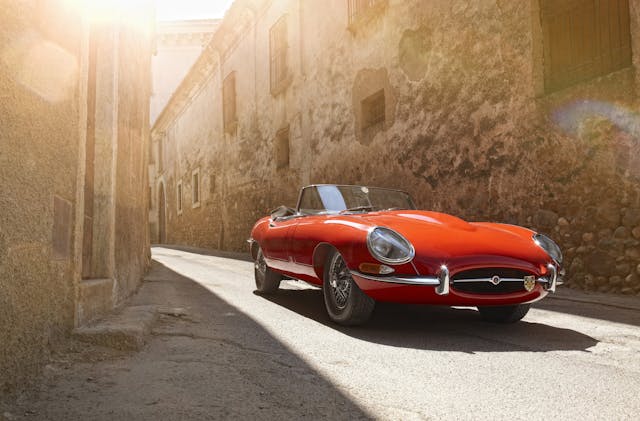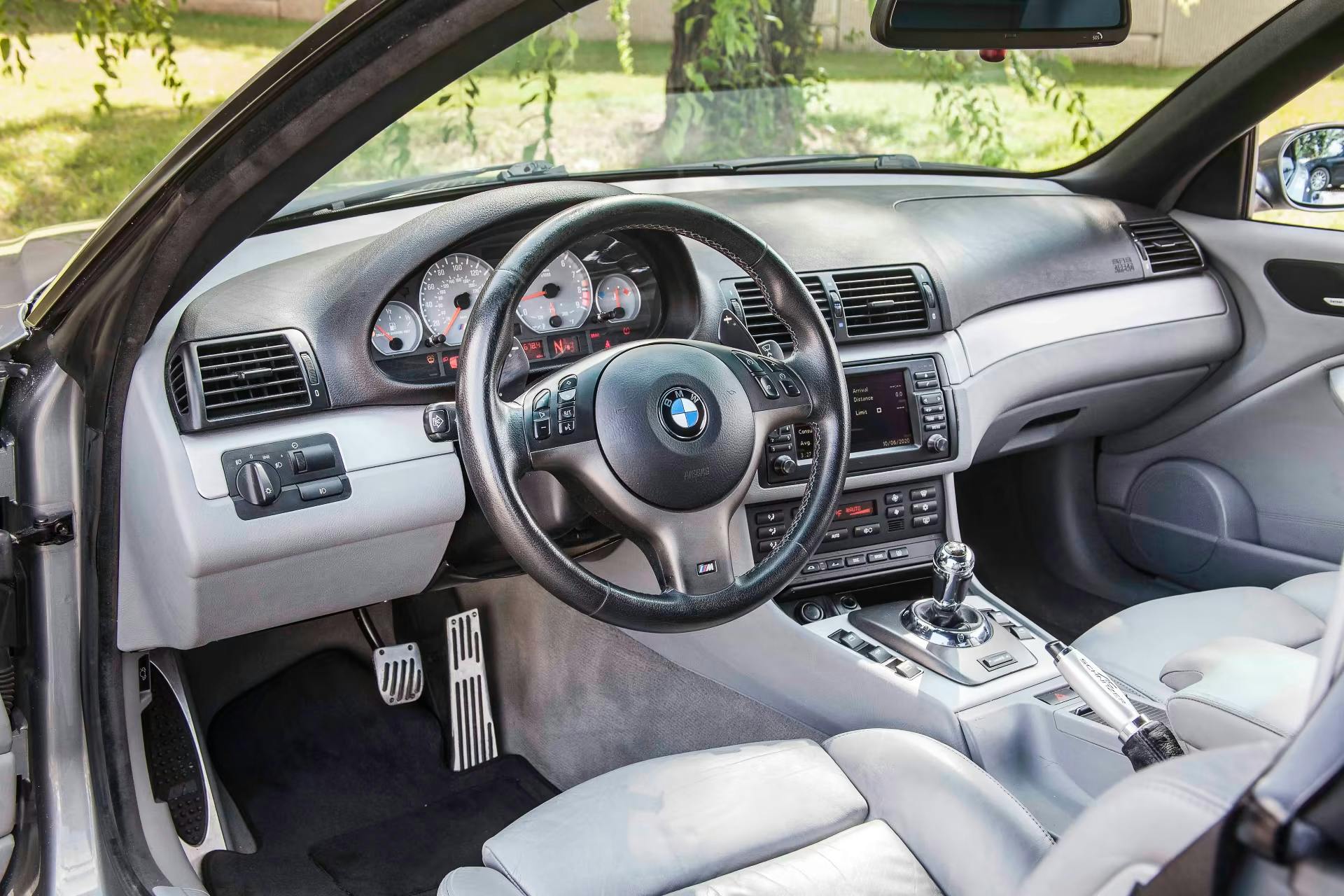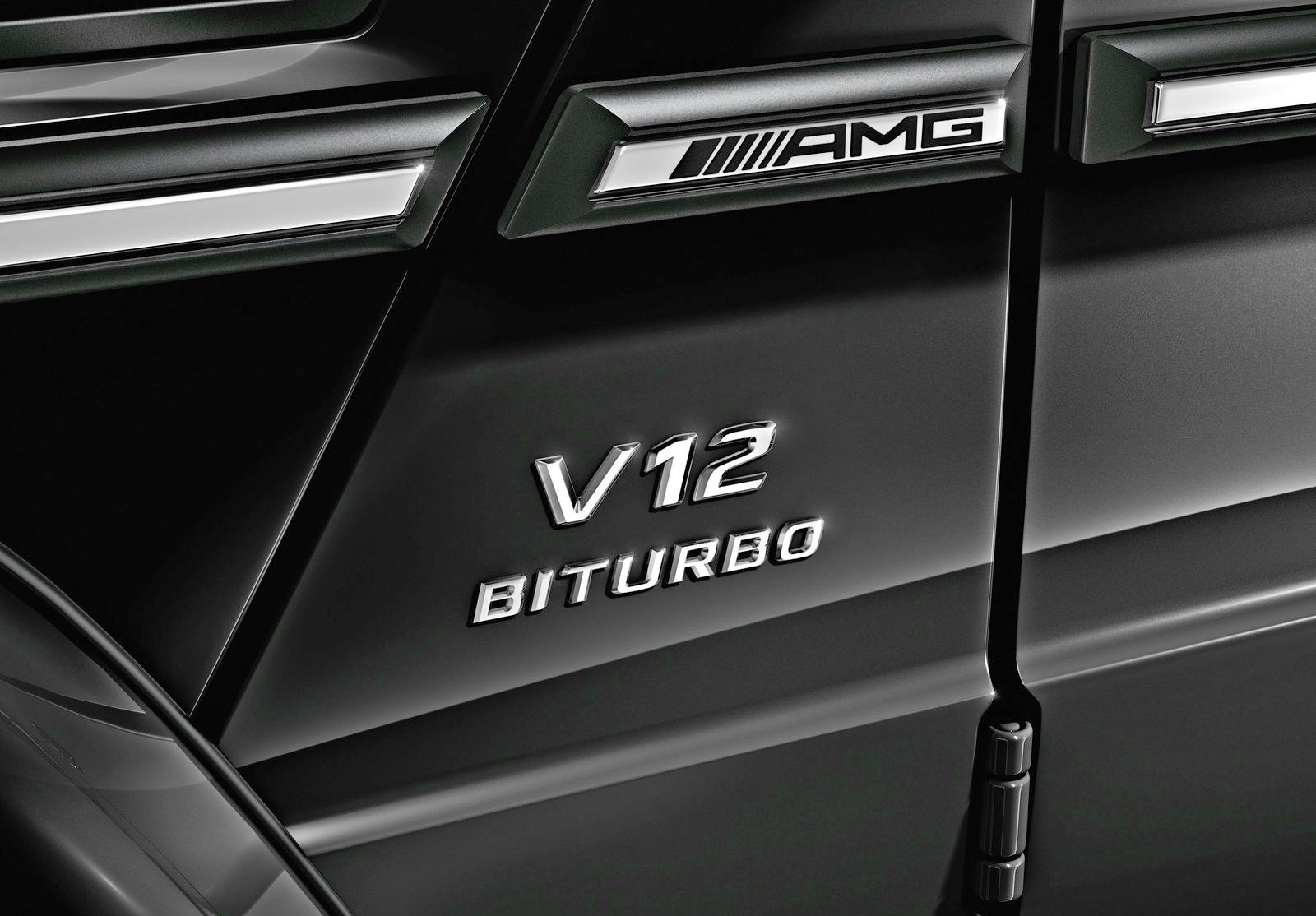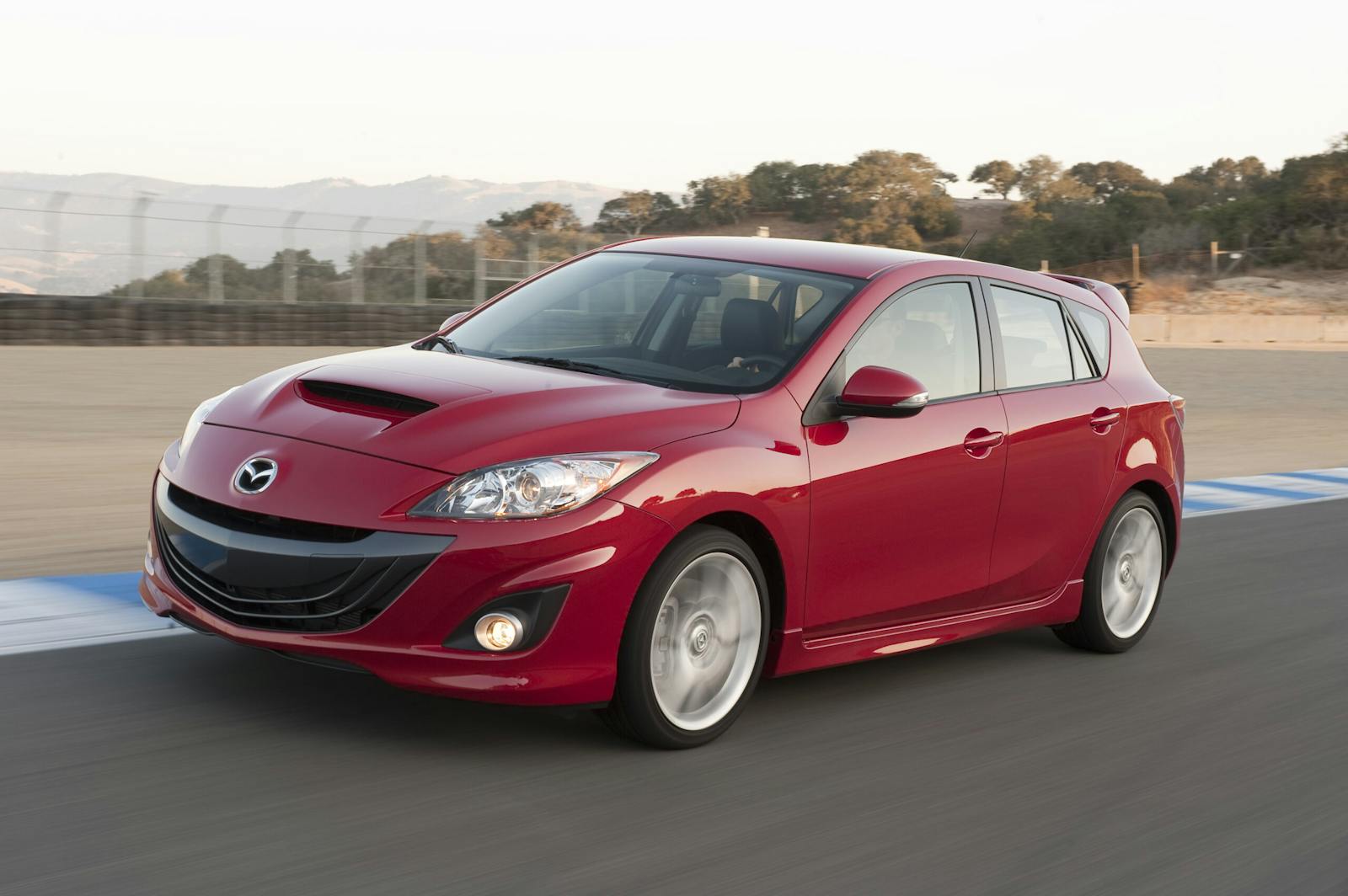3 classics with Achilles’ heels, and how to heal them
Most of us are familiar with the Greek myth of Achilles. His mother dipped him in the River Styx, rendering him invulnerable (almost). Presumably, to keep him from drowning before he could become God-like, Achilles’ mom Thetis had to hold him from somewhere, and his heel presented the most convenient handle. Since she neglected to perform a follow-up dip on the back of that foot, the proverbial “Achilles heel” has come to signify a weak spot in a person, or a fatal flaw in machinery.
Some of my favorite old cars probably have a pair of Achilles heels, and maybe an Agamemnon wrist or two if that were a thing. But unlike the fatal flaws of epic characters gone by, surely a clever wrench with a plan can overcome vehicular weaknesses to make the perfect classic, right?
Jaguar E-type (Series I )

I’ve owned what many people think of as the Achilles of sports cars. The Series I Jaguar E-type has a reputation for being almost god-like in its beauty, but painful to own, a car as reliable as the average drunk person on New Year’s Eve. I loved mine so much that I was insane enough to explore trying to make it work as a daily driver.
The pain points of the car were well-documented: An inefficient radiator and insufficient airflow caused the car to overheat in traffic on 70 degree days. The Lucas alternator lacked the juice to simultaneously operate the lights, wipers, and blower, and also failed outright with alarming regularity. The SU electric fuel pump had points, much like the also-unreliable ignition system. But there were cures: a modern aluminum radiator, and a huge electric fan allowed the car to idle on 90 degree days. A GM single-wire alternator provided a charging system that did its job, and solid-state ignition system and fuel pump banished the odd roadside breakdown. For over a year, I daily-drove the Jag and enjoyed Camry-like reliability in what is normally one of the most fickle cars of all time.
BMW E46 M3

An entire epic saga could be written about British electrics, but automotive weaknesses unfortunately aren’t limited to one nation or era. Enter the BMW E46 M3, an astonishingly good driver’s car. The last M3 with a naturally-aspirated straight-six, it had the misfortune of being built when manual transmission take rates had begun to plummet. BMW came up with what it thought was a sufficiently sporty compromise: the Sequential Manual Gearbox (SMG). Actually a manual transmission with an electro-hydraulically actuated, pedal-less clutch, you shifted the SMG either with paddles, or by moving the shift lever forwards or backwards. The box could shift on its own as well.
Alas, it hasn’t aged well, and many joke that SMG actually stands for “Serious Money Gone.” The hydraulic pump that operates the clutch is one of the culprits, costing thousands to repair. Even when working properly, the quality and speed of shifts pale in comparison to a modern dual-clutch automatic. But thankfully, the cure for this particular Achilles heel is easier than you might think, given that BMW simply automated their manual transmission. The row-your-own conversion is a matter of removing the pump that automates the clutch engagement, sourcing an OEM clutch master cylinder, pedal cluster, and a shifter, and re-programming the ECM to tell the car that it’s a conventional manual. The whole thing can be completed for $3,000 to $4,000 depending on whether or not you need a new clutch, and according to Hagerty transaction data, manual-converted M3s typically see their value go up in the marketplace.
Land Rover Discovery

Even tough off-roaders aren’t immune to weaknesses, and the original Land Rover Discovery is the perfect example. Boxy and upright with an air of understated upper-crust British luxury, Discoveries are totally capable off-road, but they’re also pitifully unreliable. That’s surprising, given the heart of the car is an American engine—the aluminum ex-Buick, Oldsmobile, Pontiac V-8. Ancient tooling and a series of displacement increases took their toll, and Discos have become famous for mixing coolant and oil in creative ways. Popped cylinder liners, cracked blocks, warped/cracked heads, the list goes on. While LS swaps are almost a cliché by now, if ever there was a platform tailor-made for one, it’s the classic Discovery.
The Disco has more than one Achilles heel, though. In addition to the engines, power-steering racks leak, ABS systems fail, cooling systems are dreadful, the list goes on. If you happen to test drive a Disco with no dash lights on, feel free to peel off the electrical tape covering them.

Numerous shops specialize in everything from simple powertrain swaps to nearly complete remanufacturing of Discos. And while the cost can be staggering—as much as a new Land Rover Defender—you can have a bulletproof classic Land Rover that you can actually trust to go off-roading or camping with. There’s a certain cachet in daily driving a classic, and a sense of accomplishment in the fact that you were able to do what Thetis wasn’t able to do for Achilles.
***
Check out the Hagerty Media homepage so you don’t miss a single story, or better yet, bookmark it. To get our best stories delivered right to your inbox, subscribe to our newsletters.





By the late 70s, Series 1 and 1 1/2 E-Types were mostly $2k pigs. We’re so expensive to maintain subsequent owners ran them into the ground .
When I owned my beautiful 67 XKE roadster my favorite saying was “Lucas Electric did more to destroy the British empire than all of Hitler’s bombs”
Lucas, the Prince of Darkness.
Why do the British drink warm beer? They have Lucas refrigerators.
Never owned an English car, but as I understand, the reputation was well deserved.
Cars with weak spots is an interesting topic. We sometimes forget that we only find out about the weak spots on cars that are popular, good look, high performance, or some other feature. We never hear about just how bad, say, a mid-seventies Mustang was, if only because so many went to the junk yard faster because of their poor styling, poor performance, et al. But here’s something to think about: If the car was otherwise decent, it might not be a bad idea to pick one up if someone else has already made the “weak spot corrections”….or, you may simply choose to correct them yourself…
I recently bought a low-mileage Porsche 996 Carrera 4 Cabrio. The price was low enough, I drove it home, then directly to my “indy”….who did the IMS, RMS, and a host of other weak spots. I was left with a car that can do 170mph, get 30 mpg (if I keep my foot out of it), has both a soft top and a hard top, and had 24K original miles. Total investment? $30k even. It’s possibly worth 35k, but, who wants to sell it…..?
1976-77 911’s are another one. I’m always amused when I hear someone say “….but watch out for those pulling studs…” As if you could find one with an original engine. Right. These cars are sleepers. Once the engine’s rebuilt properly, you have a magnesium case 911–read less tail happy than any SC–with a zinc coated body–read no rust–for a song compared to an SC. And way less when compared to a pre-zinc 911…
Moral? Know the car. Not every “weak spot” is a problem now.
I’ve always longed for an early E-Type. You simply cannot get over it’s shear, head turning, beauty. But now, I can’t afford one……Just wish I was this smart years ago…
Your right on that they are one beautiful machine
One other thing to enhance cooling on all E-Tpes is to make sure that the soft rubber seal is present over the top of the radiator. It often goes missing with age. It forces air through the radiator rather than letting it escape over the top and out through the bonnet louvers.
I agree that retrofitting an electronid igbnition system is a must do.
The other thing is to just buy a less expensive (but not nearly as pretty) Series 2 E-Type with its better cooling system, better brakes, better lighting and slightly more comfortable cockpit. That’s the one you drive all the time and enjoy with less concern over annoyances like monetary value.
Having owned a 1966 E-Type FHC for forty plus years I can’t disagree. The fixes are easy and not all that expensive. As far as electronics go; they are no worse than Bosche units the same age. When an electronic item fails; look first at the ground connection.
The problems on the E-Type are overblown.
A GM Single wire is a good addition. I did something similar back in the 70’s with a Cadillac Alternator and a Chrysler Voltage regulator. Later replaced with a single wire.
The Lucas Fuel pumps have not been that big of problem. Three in over 40 years. these are external not internal on mine.
I lunched an engine due to cotter pins running through the oil pump. -Known problem- real mess.
In 1980, I had the engine rebuilt by Gran Turismo Jaguar and a V-12 starter adapted. Today a Toyota starter would work.
I drive mine all over the country.
Right. Overblown because too many owned by Americans who couldn’t afford new or good Jaguars, used to Chevies requiring no more than occasional oil change, so much deferred maintenance, eventually serviced by ham-handed wrenches with no knowledge of imports.
You hit the nail right on the head.
Richard,
From whence came the cotter pins that fouled your oil pump?
I’m currently reading 60 psi oil pressure on my 69 4.2 and I’m pulling apart my oil filter pressure relief parts located below the oil filter housing, thinking something is keeping those relieve valves from functioning. So far I’ve found nothing and the oil pressure remains too high.
If indeed something has come loose, where would that be lodged and would that cause in increase in oil pressure?
I’d certainly appreciate any hints!
Michael
October 4, 2023 at 3:05 pm
Richard,
From whence came the cotter pins that fouled your oil pump?
I’m currently reading 60 psi oil pressure on my 69 4.2 and I’m pulling apart my oil filter pressure relief parts located below the oil filter housing, thinking something is keeping those relieve valves from functioning. So far I’ve found nothing and the oil pressure remains too high.
If indeed something has come loose, where would that be lodged and would that cause in increase in oil pressure?
I’d certainly appreciate any hints!
The Discovery and particularly the D2 is far and away a better example of the achilles heel scenario. Having owned, restored, and sold 25 D2’s the achilles “heels” have three defining characteristics:
1. Most don’t even show up until north of 75k miles, most not even until north of 120k.
2. Most are almost exclusively design/material related, with a few manufacturing related, and can be addressed with relatively simple upgrades
3. Once addressed, thousands of Discos have made it waaaaayyyyyy past 200k. I have three personal D2’s with 260, 237, and 216k.
Easiest and least expensive cure for all of these and other “Achilles heel” vehicles: Visit them in museums.
One of the last swaps our shop did (before we closed and retired) was placing a GM Atlas 4.2 inline six with a T56 where the original 3.8 under-perfomer lived. It made the old Jag a whole new animal. Yes, it was expensive and it took almost eight months, but what a difference!
I had a 1988 Jaguar XJ6. It was one of those cars that when you sat in the driver’s seat it wrapped itself around you and you became one with the car! HOWEVER – The going joke among Jaguar owner’s was “A Jaguar stops leaking only when it has exhausted all fluids!” 🙂 I learned that if you fixed a leak, another one would instantly appear. So you were better off buying that fluid in 55 gallon drums! The “Devil you know…”philosophy. One more thing… The hydraulic system that provides ride height leveling also provides hydraulic power for brakes and steering. Lose one. lose them all!!
Rover never used the Oldsmobile aluminum V-8 (which differs from the Buick 215 V-8) nor the Pontiac “small V-8”, which was not aluminum and had 326 cubic inches. Rover only used, and still uses, a licensed Buck 215 aluminum V-8. The confusion begins that the Oldsmobile and Buick 215 engines used the same intake and exhaust manifolds and were both made of aluminum. Many of the internal parts were interchangeable.
The Oldsmobile was a stronger engine with eight (8) more head bolts and valve covers whose upper surfaces were parallel with the engine block, where the Buick had less head bolts and the upper surface of the valve covers were parallel with the ground, making their engines somewhat resemble a “small nailhead” Buick engine. The Pontiac “Tempest” had 326 cubic inches and was just a Pontiac 389 with smaller innards. Now, you know the rest of the story!
Actually, from what I have read in many sources, Pontiac DID use the aluminum V8, albeit in small numbers (about 3662, per Wikipedia), in 1961 and 1962. The 326 debuted in the Tempest for 1963, per the Wiki source.
If I had a clean E-Type Jag, I’d put an American Autowire wiring system and upgrade the switches and gauges, then drop in a Hellcat engine, aluminum radiator, and Tremec 6 speed and let the good times roll.
Only hitch: You’d no longer have a Jaguar, just another Frankencar. There goes the neighborhood. The perfect solution for those lacking the knowledge to appreciate charm and originality, the real thing. Rip out the drivetrain, the soul of any car, dump in a V-8.
I agree, typical nonsense talk and the same counts for the work done on the E-type
Glad you don’t have an E-type, then!
Long ago worked at a Jaguar/MG/Triumph dealer that also sold Renault Le Cars, of all things. All true about the E-Type, Monsignor Sass, except ignition points do not leave you with “roadside breakdown,” odd or otherwise. With points, you can always limp home. Not so when a solid state module expires. Many with everything from ’30s, ’40s Cords, Cads, Packards and others have installed 6-volt, 55-amp alternators, but retain points. Additionally, solid state conversions demand peak voltage. If too low in some, certainly a Cord, with its pre-select electro-pneumatic transmission, no go.
…said Su8overdrive to Carroll Shelby and to every hot rodder since 1940 …
And in general, he would be right, too. The drivetrain IS the soul of a vehicle. That said, I see a clear difference between powering-up the stock flathead V8, for example, and installing a GM engine, LS or otherwise. It is still the original engine, just built up, like a human training for a marathon.
Absolutely, period speed equipment on the original engine, now you’re talking. Higher compression head(s), another carb, lightened flywheel, longer-legged rear axle and/or overdrive add to the proceedings. Long ago, in England and the States, such was termed “tuning.” Think various stock but tweaked Hudsons and Railtons, the half dozen ’37 Chrysler “Super Power Saloons” by Capt. G.E.T. Eyston, even factory options like the rare, no-cost ’39-on 3.6:1 “economy” rear axle in place of the standard Buick Century/Roadmaster’s 3.9; the 3.36 HydraMatic rear cog in ’41-on manual shift Cads instead of the usual 3.77:1.
My old mechanic’s mechanic, who ran motor pools in the War II Pacific, then worked at Hudson, Packard, GM dealerships before opening his own shop in 1958, said some Hudson owners in the California ag valley who already had optional overdrive would ask for the slightly taller non-OD differential, for faster postwar open roads, long before today’s 41 million people.
He also recalled one of the fellow wrenches at the Madera, CA Packard dealer, this was either late ’46 or ’47, relieving the valves in his ’36 One-Twenty, a little of this and that, and that baby (“junior” as such models called) flew.
Look at all the available speed equipment advertised in the back pages of any circa 1949-52 Motor Trend, Road & Track, Hot Rod, Mechanix Illustrated.
The British motors dealership i worked at charged $4,500 to rebuild an XK6 engine, a whopping $9,500 to rebuild a Jag ue were V-12 engine in 1978. We wondered at the time who could afford the latter surgery.
But the chowderheads plastering every dealer trim option on a vintage car diminishes; less is more in that regard, as with today’s clown car colors instead of the subtle, understated period hues.
Our Series II E-Type never misses a beat and has been 100% trouble-free. Our classic car dealership had many XKEs over the years and they were for the most part every bit as reliable as others from that era. Granted, here in the midwest there is no prolonged stop & go traffic overheating and the 6-cylinder cars are far simpler than the smog-laden 12s. I think the tales of unreliability are grossly overblown by those who’ve either never owned one or of cars left out in the weather back in yesteryear (those lovely hood louvers allow rain water to soak the firewall & engine).
The problems with the RV8 are massively overstated in the article – and this is coming from someone who’s been driving Land-Rover V-8 products for the past 25-odd years. Corrosion issues notwithstanding (the bane of anything British) The Land-Rover product line (specifically the Range Rover Classics, the Discovery I and II) are dead reliable performers and will go 250 K between overhauls if treated properly and kept up on their oil changes and coolant flushes. They do have issues with electronics and such, but these are easily diagnosed and fixed if you have a competent mechanic.
Only caveat: DON’T overheat them. You do, and you are in a world of hurt.
Now, if Land-Rover had actually managed to use plastic in these cars that didn’t succumb to UV… 🙁
Al, we sold a Land Rover Discovery and the new owner kept bringing it back with different warning lights on the dash. Check Engine light, ABS light, etc etc.. We’d have one fixed and another would pop up two days later. So, one day while at the Manheim Auto Auction I saw the guy next to me was wearing a shirt with Land Rover logo and I mentioned it to him. He was silent for awhile then said “I’m the Range Rover dealer in Harrisburg; how’d you like a lot full of problems like that?”. Nuff said…